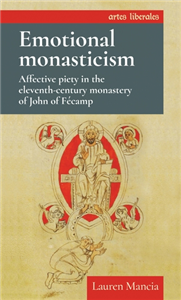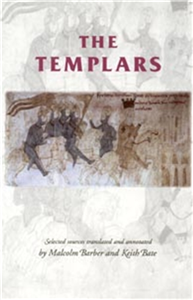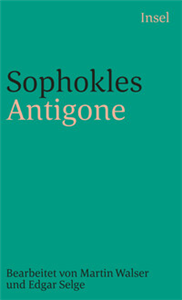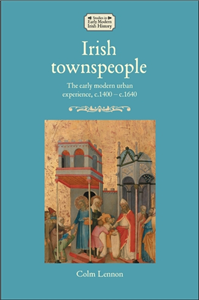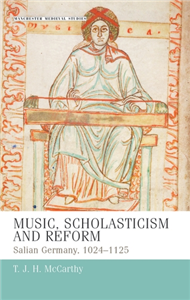Your Search Results
-
Promoted ContentHumanities & Social SciencesJanuary 2016
The annals of Lampert of Hersfeld
by I. Robinson
This is a translation of the eleventh-century Latin Annals of Lampert, monk of Hersfeld, with detailed commentary and introduction. No translation has hitherto been published in English, despite the fact that it is one of the best known of all the narrative sources of the Middle Ages, constantly mentioned in the English secondary literature. Lampert produced the most detailed account of the events of 1056-77 (the minority of Henry IV of Germany and the first decade of his personal rule), a period of crisis and rebellion culminating in the conflict between the king and Pope Gregory VII. He is widely regarded as 'the unrivalled master among medieval historians' and 'a superb story-teller', noted for his vivid characterisation and narrative. An English translation of this work is of the greatest value to teachers and students of medieval history and also of interest to the general reader of European literature.
-
Promoted Content
-
 Trusted Partner
Humanities & Social SciencesJune 2015
Trusted Partner
Humanities & Social SciencesJune 2015The annals of Lampert of Hersfeld
by Rosemary Horrox, Simon Maclean, Rebecca Mortimer
-
 Trusted Partner
Humanities & Social SciencesJune 2015
Trusted Partner
Humanities & Social SciencesJune 2015The annals of Lampert of Hersfeld
by Rosemary Horrox, Simon Maclean
-
 Trusted Partner
Humanities & Social SciencesJune 2021
Trusted Partner
Humanities & Social SciencesJune 2021Emotional monasticism
Affective piety in the eleventh-century monastery of John of Fécamp
by Lauren Mancia
Medievalists have long taught that highly emotional Christian devotion, often called 'affective piety', appeared in Europe after the twelfth century and was primarily practiced by communities of mendicants, lay people and women. Emotional monasticism challenges this view. The first study of affective piety in an eleventh-century monastic context, it traces the early history of affective devotion through the life and works of the earliest known writer of emotional prayers, John of Fécamp, abbot of the Norman monastery of Fécamp from 1028-78. Exposing the early medieval monastic roots of later medieval affective piety, the book casts a new light on the devotional life of monks in Europe before the twelfth century and redefines how medievalists should teach the history of Christianity.
-
 Trusted Partner
Literary studies: classical, early & medievalAugust 2002
Trusted Partner
Literary studies: classical, early & medievalAugust 2002The Templars
by Barber, Bate
The Templars were members of a monastic order established in 1099 after the success of the First Crusade. Enjoying the support of both the Church and the laity and vowed to poverty, chastity and obedience, these 'fighting monks' were the vital defenders o. A unique collection of translated sources documenting the origins of the Order and the circumstances of its suppression and dissolution. Offers a valuable insight into the lives of those who joined, supported, and attacked this most fascinating and enigmatic of institutions. Examines the many and varied facets of the Order's activities during the twelfth and thirteenth centuries. There is no other book of translated sources devoted in its entirety to the Templars.
-
 Trusted Partner
September 2020
Trusted Partner
September 2020Das Think Like a Monk-Prinzip
Finde innere Ruhe und Kraft für ein erfülltes und sinnvolles Leben
by Shetty, Jay
-
 Trusted Partner
June 1989
Trusted Partner
June 1989Antigone
by Sophokles, Friedrich Hölderlin, Martin Walser, Edgar Selge
Die Antigone des Sophokles, eines der bedeutendsten und wichtigsten Dramen der Weltliteratur, hat im Laufe seiner Wirkungsgeschichte viele Übersetzer, Nachdichter und Dramatiker beschäftigt und zum eigenen Umgang mit dem großen Thema von Liebe und Hass, Recht und Unrecht angeregt. Die mit Gewissheit poetischste, musikalischste und sprachmächtigste Übertragung des griechischen Textes ins Deutsche haben wir Friedrich Hölderlin zu verdanken, dessen Antigone nun Martin Walser und Edgar Selge (Autor der eine, Schauspieler der andere) bearbeitet und für das Theater der Gegenwart eingerichtet haben. Entstanden ist dabei ein Text, der sich sehr wohl dem Ton und dem Rhythmus Hölderlins verpflichtet weiß, der aber den Konflikt Antigones mit Kreon, ihrem Onkel, dem König von Theben, schärfer und kontrastreicher herausarbeitet und der von der ersten Szene an für ein entschiedeneres Tempo und damit für mehr Spannung und Intensität sorgt. Martin Walsers und Edgar Selges Bearbeitung, die am 20. Juni 1989 bei den Bad Hersfelder Festspielen ihre Premiere auf der Bühne hatte, erleichtert dem heutigen Leser und Zuschauer den Zugang zu einem Werk das, rund 2400 Jahre alt, am Anfang der europäischen Dramenliteratur steht und dennoch zeitlos gültig geblieben ist.
-
 Trusted Partner
Humanities & Social SciencesSeptember 2022
Trusted Partner
Humanities & Social SciencesSeptember 2022Monastic experience in twelfth-century Germany
by Alison I. Beach, Shannon M. T. Li, Samuel Sutherland
-
 Trusted Partner
Humanities & Social SciencesApril 2020
Trusted Partner
Humanities & Social SciencesApril 2020Monastic experience in twelfth-century Germany
by Alison I. Beach, Shannong Li, Samuel Sutherland
-
 Trusted Partner
November 1997
Trusted Partner
November 1997alles was Brecht ist ...
Fakten - Kommentare - Meinungen - Bilder. Begleitbuch zu den gleichnamigen Sendereihen von 3sat und S2 Kultur
by Werner Hecht
Texte von Bertolt Brecht Originalbeiträge von Heinz Adameck, Wolfgang Gersch, Egon Monk und Dieter Wöhrle Zeitgenössische und aktuelle Kritiken Zahlreiche Abbildungen Eine Radiographie. Bertolt Brecht im deutschsprachigen Hörspiel Eine Videographie. Bertolt Brecht in Film und Fernsehen
-
 Trusted Partner
Trusted Partner
-
 Trusted Partner
Humanities & Social SciencesMay 2026
Trusted Partner
Humanities & Social SciencesMay 2026Irish townspeople
The early modern urban experience, c.1400–c.1640
by Colm Lennon
Through a series of innovative perspectives, this book examines how early modern Irish townspeople experienced the urban world through a range of family and associational ties. Migrants inducted through town citizenship and marriage bonded more closely as sisters or brothers of confraternities and guilds, consolidating parish membership. Civic religion saw the integration of religion with town politics and councils, and monastic charity of the friars' hospitals preceded the era of modern municipal welfare. In circumstances of the alienation of the long-settled Catholic townspeople from the state's religious and political Reformation in the seventeenth century, they drew sustenance from the continuity of institutions such as colleges, fraternities and hospitals and forms of coexistence with Protestant fellow-citizens.
-
 Trusted Partner
Humanities & Social SciencesJanuary 2018
Trusted Partner
Humanities & Social SciencesJanuary 2018Noble society
Five lives from twelfth-century Germany
by Jonathan R. Lyon
This book provides scholars and students alike with a set of texts that can deepen their understanding of the culture and society of the twelfth-century German kingdom. The sources translated here bring to life the activities of five noblemen and noblewomen from Rome to the Baltic coast and from the Rhine River to the Alpine valleys of Austria. To read these five sources together is to appreciate how interconnected political, military, economic, religious and spiritual interests could be for some of the leading members of medieval German society-and for the authors who wrote about them. Whether fighting for the emperor in Italy, bringing Christianity to pagans in what is today northern Poland, or founding, reforming and governing monastic communities in the heartland of the German kingdom, the subjects of these texts call attention to some of the many ways that noble life shaped the world of central medieval Europe.
-
 Trusted Partner
Medieval historyApril 2009
Trusted Partner
Medieval historyApril 2009Music, scholasticism and reform
Salian Germany 1024–1125
by T. J. H. McCarthy
This fascinating study looks at music and its intellectual context in the eleventh and twelfth centuries. Drawing on a rich body of theoretical literature and manuscript sources, this book paints a detailed picture of the study of music in eleventh-and early twelfth-century Germany. It focuses on the activity of a group of prominent intellectuals based in the monastic and cathedral schools of the German Kingdom, charting their sources and shared concerns, while subtly examining their reception and modification of each others' ideas. Distilling a considerable amount of German scholarship, it situates music in its proper place among other intellectual developments that took place in eleventh-century Germany. This book is above all a study of motivations and thought processes of a group of medieval thinkers: it and will appeal to specialist and non-specialist ecclesiastical, intellectual and cultural historians, as well as to historians of music and of medieval culture.
-
 Trusted Partner
Literature & Literary StudiesMay 2008
Trusted Partner
Literature & Literary StudiesMay 2008Eleventh-century Germany
The Swabian chronicles
by Rosemary Horrox, Simon Maclean, I. Robinson
Three of the most important chronicles of eleventh-century Germany were composed in the south-western duchy of Swabia. The chronicles reveal how between 1049 and 1100 the centripetal attraction of the reform papacy became the dominant fact of intellectual life in German reformed monastic circles. In the abbey of Reichenau Herman 'the Lame' composed a chronicle of the reign of Emperor Henry III (1039-56). His pupil, Berthold of Reichenau, continued his master's work, composing a detailed account of 1076-1079 in Germany. Bernold, a clergyman of Constance, continued the work of Herman and Berthold in a text containing the fullest extant account of 1080-1100. Herman's waning enthusiasm for the monarchy and growing interest in the newly reformed papacy were intensified in Berthold's chronicle, and writing in the new context of the reformed monasteries of south-western Germany, Bernold preached total obedience to the Gregorian papacy. The Swabian chronicles are an indispensable resource to the student of the changing loyalties and conflicts of eleventh-century Germany. ;
-
 Trusted Partner
Literature & Literary StudiesJanuary 2013
Trusted Partner
Literature & Literary StudiesJanuary 2013Eleventh-century Germany
The Swabian chronicles
by I. Robinson
Three of the most important chronicles of eleventh-century Germany were composed in the south-western duchy of Swabia. The chronicles reveal how between 1049 and 1100 the centripetal attraction of the reform papacy became the dominant fact of intellectual life in German reformed monastic circles. In the abbey of Reichenau Herman 'the Lame' composed a chronicle of the reign of Emperor Henry III (1039-56). His pupil, Berthold of Reichenau, continued his master's work, composing a detailed account of 1076-1079 in Germany. Bernold, a clergyman of Constance, continued the work of Herman and Berthold in a text containing the fullest extant account of 1080-1100. Herman's waning enthusiasm for the monarchy and growing interest in the newly reformed papacy were intensified in Berthold's chronicle, and writing in the new context of the reformed monasteries of south-western Germany, Bernold preached total obedience to the Gregorian papacy. The Swabian chronicles are an indispensable resource to the student of the changing loyalties and conflicts of eleventh-century Germany.
-
 Trusted Partner
September 2022
Trusted Partner
September 2022Lust
Fuckability, orgasm gap and #metoo
by Henriette Hell
Lust, a mortal sin? These times are over. In today's public perception, it is more likely for a boring sex life to be categorised as that. In statistical terms, people have never had as little sex with each other as they do today. And yet tips for a good sex life are to be found on every (digital) corner. Sex has mutated into a lifestyle product, and terms like 'fuckability' and 'MILF' trip lightly off our tongues. Henriette Hell takes a closer look at the thing about sex. She traces the history and genesis of 'sexual liberation', and sheds light on the 'cheating gene' and the #metoo debate. The author asks (and answers) the question of whether sex is becoming more and more antisocial and what actually still turns us on today. In doing so, she focuses on the former mortal sin of lust, which is inseparably linked to the systematic suppression of female lust (and its liberation).






